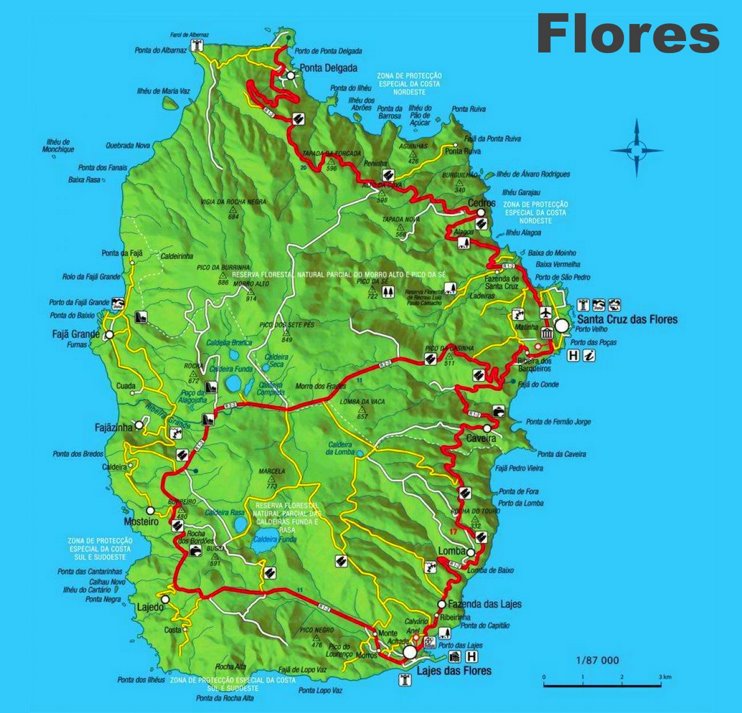Flores Island Map
Description:
This map shows towns, villages, main roads, secondary roads, points of interest, tourist attractions, and sightseeings on Flores Island.
About Flores Island
Flores IslandFlores is the westernmost island of the Azores archipelago, Portugal, located in the North Atlantic Ocean. With an area of 54.5 square miles (141.4 square kilometers), it is part of the Western Group of the Azores. The island was named "Flores" (flowers in Portuguese) due to its abundant yellow flowers called Cubres when it was discovered in the 15th century.
The island's population is approximately 3,400 inhabitants, with two municipalities: Santa Cruz das Flores and Lajes das Flores. The main economic activities include agriculture, cattle raising, fishing, and increasingly, tourism. The island's terrain is characterized by rugged coastlines, deep valleys, and numerous lakes formed in volcanic craters. The highest point is Morro Alto, reaching 3,087 feet (914 meters) above sea level.
Notable natural attractions include the Sete Lagoas (Seven Lakes), a collection of crater lakes scattered across the central plateau, and the Rocha dos Bordões, a distinctive geological formation of vertical basalt columns. The island features numerous waterfalls, including the spectacular Poço do Bacalhau and Ribeira Grande falls. The Fajã Grande, Europe's westernmost village, is famous for its dramatic coastal scenery and multiple waterfalls visible from the settlement. The island's Gruta dos Enxaréus is a notable sea cave accessible only by boat.
Flores Island was designated as a UNESCO Biosphere Reserve in 2009, recognizing its unique biodiversity and well-preserved natural landscapes. The island maintains several protected areas and offers numerous hiking trails that allow visitors to explore its pristine environment.
Azores Islands: | São Miguel | Pico | Terceira | São Jorge | Faial Island | Santa Maria | Graciosa | Corvo
You may download, print or use the above map for educational, personal and non-commercial purposes. Attribution is required. For any website, blog, scientific research or e-book, you must place a hyperlink (to this page) with an attribution next to the image used.

